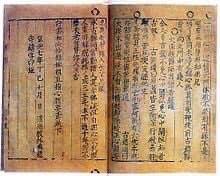Hazrat Nizamuddin Auliya, who lived from 1238 to 1325, is an extremely popular Sufi saint of the Chishti Order. He had two disciples, both well-known poets of their time: Amir Khusrau and Amir Hasan Sijzi.
This post is about Hasan Sijzi's mazar in khupdabad
#SufiThursdays
1/
This post is about Hasan Sijzi's mazar in khupdabad
#SufiThursdays
1/

When Sultan Mohd bin Tughluq ordered in 1327 that his capital be shifted from Delhi to Deogir (Daulatabad),he instructed the elites, nobles, officers, common men, and even the saints to shift with him
The Sufi saints, 1,400 of them, decided to settle in an area near Daulatabad
2/
The Sufi saints, 1,400 of them, decided to settle in an area near Daulatabad
2/
Amir Najm al-Din Hasan Dihlavi ibn Khwaja Ala al-Din Sistani, commonly known as Amir Hasan Sijzi or Hazrat Amir Hasan Dehlvi, was also buried there. He too had been ordered to leave Delhi for Daulatabad, and was never to return.
3/
#SufiThursdays
3/
#SufiThursdays

If Amir Khusrau captured Hazrat Nizamuddin Auliya’s teachings in his songs and poetry, Amir Sijzi did the same in the famous compilation titled Fawa’id-al-Fu’ad, which contains the literary discourses of Hazrat Nizamuddin Auliya.
4/
#SufiThursdays
4/
#SufiThursdays

Unlike Amir Khusrau who became his disciple when he was around 8yo, Amir Sijzi became Auliya’s disciple quite late in life, when he was already an established poet and called the Saadi-e-Hind. Amir Sijzi was born in Badaun in Uttar Pradesh in 1254 and died in Daulatabad in 1337. 

When I reached Khuldabad, I had to ask many people about this shrine. I was told to look out for a big gate with an old man sitting in front of it. This was to the west of Khuldabad and it seemed as though not many people visit this place.
6/
#SufiThursdays
6/
#SufiThursdays

It is believed that the original copy of the Fawa’id-al-Fu’ad is buried with Amir Hasan Sijzi as per his will.
7/
#SufiThursdays
7/
#SufiThursdays

The caretaker told me that children who can’t talk are brought to this shrine and given sugar, which is believed to give them the power of speech. On hearing that I was a writer, the caretaker offered me some sugar to sweeten my pen. I pray that it works.
8/8
#SufiThursdays
8/8
#SufiThursdays

*khuldabad
• • •
Missing some Tweet in this thread? You can try to
force a refresh






























